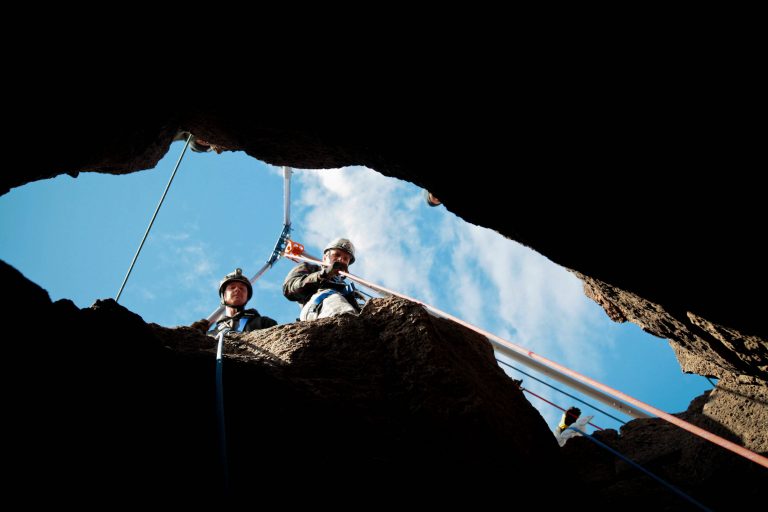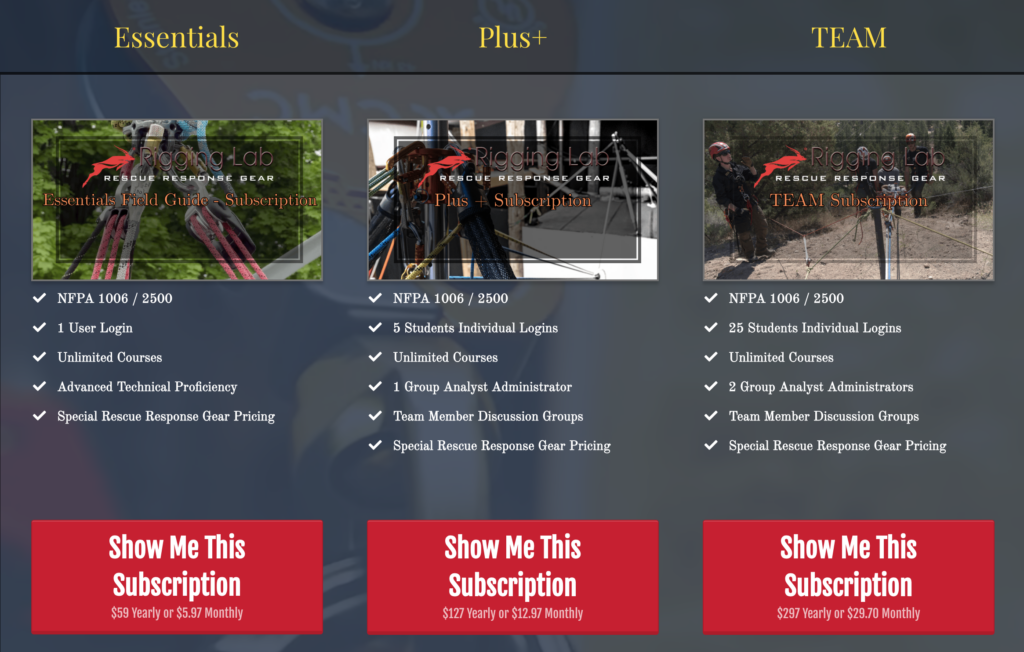Confined Space Rescue Essential Equipment and Techniques
Confined space rescues are among the most complex and high-risk scenarios that rescue teams face, demanding a precise balance of technical skill, advanced rigging, and specialized equipment. Unlike open-air rescues, confined spaces are often restrictive, hazardous, and challenging to access. The margin for error is slim, and safety is paramount. This comprehensive checklist serves as a practical guide to the critical equipment and techniques needed for confined space operations, whether in industrial settings, urban environments, or natural underground spaces. From carefully selecting mechanical advantage systems to ensuring continuous air monitoring, this list equips rescue professionals with the tools and strategies necessary to perform efficiently and safely. Utilizing a systematic approach, rescue teams can adapt to the diverse demands of confined spaces while minimizing risk to both themselves and those they’re working to help.
This checklist provides a structured foundation for teams and individuals striving to elevate their skills, reduce risks, and approach each confined space incident with confidence. By highlighting key aspects like advanced rigging setups, essential ventilation practices, and communication strategies, this guide is an essential resource for technicians, team leaders, and safety officers preparing for complex rescues in confined spaces.
1. Mechanical Advantage Systems
Mechanical advantage systems are the backbone of efficient confined space rescues, allowing rescuers to manage loads with minimal physical strain. Given the restrictive nature of confined spaces, these systems must be compact yet powerful, ensuring that rescuers can lift and lower victims safely and with control. Choosing the right MA system, whether a basic 3:1 or more complex double-Z setup, provides the necessary balance between power and manageability. Progress capture devices add an extra layer of security, preventing any sudden load slippage—a critical safeguard in confined environments.
- 3:1 and 4:1 Haul Systems
- Select system based on load and access needs.
- Ensure smooth operation with low-friction pulleys.
- Comment: Ideal for confined spaces where compact, powerful hauling setups are essential.
- Double-Z and Piggyback Systems
- Use for complex or high-load situations.
- Verify setup to prevent entanglement in confined spaces.
- Comment: Provides extra lifting power while keeping the system manageable in tight quarters.
- Progress Capture
- Incorporate prusiks or mechanical progress capture devices.
- Confirm reliable capture to avoid slippage.
- Comment: Essential for controlling loads in confined spaces; select devices that lock automatically.
2. Load Distribution Techniques
In confined spaces, secure load distribution is essential for system stability. Anchors must be placed strategically to handle dynamic forces, while multi-point setups distribute the weight evenly, reducing strain on any single anchor point. Redirects can also keep the rigging aligned with the path of rescue, which is vital in the tight, often irregular confines of these operations. Mastery of load distribution techniques ensures that rigging systems function safely and efficiently under the unpredictable conditions of confined space rescues.
- Anchor Setup
- Establish secure anchors on solid surfaces (walls, ceiling mounts, or portable systems).
- Check load rating and redundancy.
- Comment: Solid anchors are the foundation of any confined space setup—assess structural stability carefully.
- Using Redirects in Confined Spaces
- Position redirects to guide ropes without excessive friction.
- Maintain a clear path for safe movement.
- Comment: Redirects help minimize rope drag and keep the setup aligned in confined layouts.
- Dynamic Rigging Adjustments
- Have a plan for adapting MA setups mid-operation.
- Communicate any adjustments with the entire team.
- Comment: Flexibility is key; unexpected changes in confined spaces require quick adjustments.
3. High Directional Setups for Confined Spaces
High directionals, like tripods and A-frames, are invaluable for confined space rescues, especially when vertical access is required. Tripods provide stable, elevated anchor points for lifting and lowering, while monopods and gin poles are ideal for spaces with height restrictions. These setups allow rescuers to clear obstacles and create more direct lines for safe patient transport. The ability to adapt high directional setups to confined spaces not only enhances efficiency but also minimizes risks in challenging environments.
- Tripods and A-Frames
- Set up high directional anchors for optimal load angles.
- Ensure stability on uneven or confined surfaces.
- Comment: Choose a high-directional system that suits the confined space layout and load requirements.
- Monopods and Gin Poles
- Use where height is limited and space is tight.
- Confirm anchor points and stability.
- Comment: Monopods are compact but effective solutions for constrained environments.
- Tensioned Track Systems (TTRS)
- Set up TTRS where horizontal movement is necessary.
- Check track tension and load capacity.
- Comment: TTRS are critical in horizontal confined spaces to stabilize the load and manage slack.
4. Rescue Tripods and Portable Anchors
Rescue tripods and portable anchors offer flexibility and stability in spaces where traditional anchors are not available. Confined spaces often have limited natural anchor points, so portable systems enable rescuers to create secure attachment points in nearly any location. Tripods are the preferred option for vertical confined spaces, while monopods and other portable anchors provide alternatives in spaces with unique constraints. Selecting the right portable anchor system ensures that rescuers have dependable, adaptable anchor points regardless of the environment.
- Tripod Selection
- Choose height and material suitable for confined space.
- Ensure load rating meets the operation’s demands.
- Comment: Tripods are a go-to for vertical confined space operations but require secure positioning.
- Alternative Anchors
- Select monopods or other anchors for spaces unsuitable for tripods.
- Double-check load-bearing capacities.
- Comment: Use alternative anchors when tripods aren’t feasible; be mindful of load distribution.
5. Descent and Ascender Devices
Descent control devices and mechanical ascenders are critical tools for confined space rescues, where control and precision are necessary to avoid hazards. Devices like Petzl IDs or CMC Clutch offer secure, controlled descent, while mechanical ascenders allow for efficient vertical movement. In confined spaces, where unexpected movement can pose significant risks, the use of auto-locking descenders adds an additional layer of safety. These tools enhance mobility, enabling rescuers to move confidently and with control in restricted spaces.
- Controlled Descent Devices (e.g., Petzl ID, CMC Clutch)
- Verify device compatibility with confined space harnesses.
- Test descent control to avoid abrupt movements.
- Comment: Smooth descent control is essential; devices with self-locking features add safety.
- Mechanical Ascenders (e.g., Petzl Croll)
- Select ascenders based on confined space requirements.
- Check for compatibility with other rigging elements.
- Comment: Mechanical ascenders improve mobility in vertical confined spaces and aid in efficient rescuer positioning.
6. Air Quality and Ventilation Equipment
Maintaining safe air quality is paramount in confined space rescues, where toxic gases, low oxygen levels, and flammable atmospheres are potential hazards. Multi-gas detectors provide continuous monitoring of these environmental risks, ensuring that rescuers are alerted to changes in real-time. Ventilation systems, such as axial fans with flexible ducts, help introduce fresh air and reduce dangerous gas buildup. Properly planned ventilation and monitoring are essential for safe, sustainable operations in confined spaces, protecting both the rescue team and the victim.
- Multi-Gas Detectors
- Monitor oxygen, toxic gases, and explosive atmospheres.
- Set up continuous monitoring for the entire operation.
- Comment: Essential in any confined space; ensure the detector is calibrated and functioning.
- Ventilation Systems
- Use positive or negative pressure systems based on confined space needs.
- Position fans or ducting to optimize air circulation.
- Comment: Proper ventilation reduces toxic gas buildup and provides fresh air—position systems strategically.
7. Lighting Solutions for Low-Visibility Spaces
Adequate lighting is indispensable in confined space rescues, where visibility is often limited. Helmet-mounted and portable lights provide hands-free illumination for rescuers, while area lighting ensures visibility for the entire team in larger spaces. Emergency backup lighting solutions, like glow sticks or mini LED lights, are also essential to have on hand. Thoughtful use of lighting reduces the risk of disorientation and enhances safety, allowing rescue teams to operate effectively even in the darkest confined spaces.
- Helmet-Mounted and Portable Lighting
- Equip rescuers with headlamps or helmet lights for hands-free illumination.
- Test brightness and beam angle in low-visibility areas.
- Comment: Lighting is critical in confined spaces; adjust beam strength to avoid disorienting reflections.
- Area Lighting
- Position battery-operated area lights for broader coverage.
- Confirm backup power is available.
- Comment: Area lighting helps maintain visibility for all team members in larger confined spaces.
This confined space rescue checklist highlights the essential components that contribute to a safe, organized, and efficient response in restrictive environments. By following a structured approach to mechanical advantage, anchor selection, ventilation, and safety protocols, rescue teams can confidently address the unique challenges of confined space operations. Each item on this list underscores the importance of preparedness and adaptability in high-risk rescue scenarios, where every decision matters.
Ultimately, the success of a confined space rescue lies in the precision of preparation, the reliability of gear, and the clarity of teamwork. With this checklist as a foundation, rescue professionals can build a strong, informed approach to confined space operations, enhancing safety, effectiveness, and readiness for even the most complex situations.
- Mastering Confined Space Rescue Techniques(Opens in a new browser tab)
- Welcome to Confined Space Rescue Demonstration: Awareness(Opens in a new browser tab)
- Confined Space Rescue Awareness | Strategies & Tactics(Opens in a new browser tab)
- Welcome to Confined Space Rescue Demonstration: Operations(Opens in a new browser tab)
Peace on your Days
Lance











